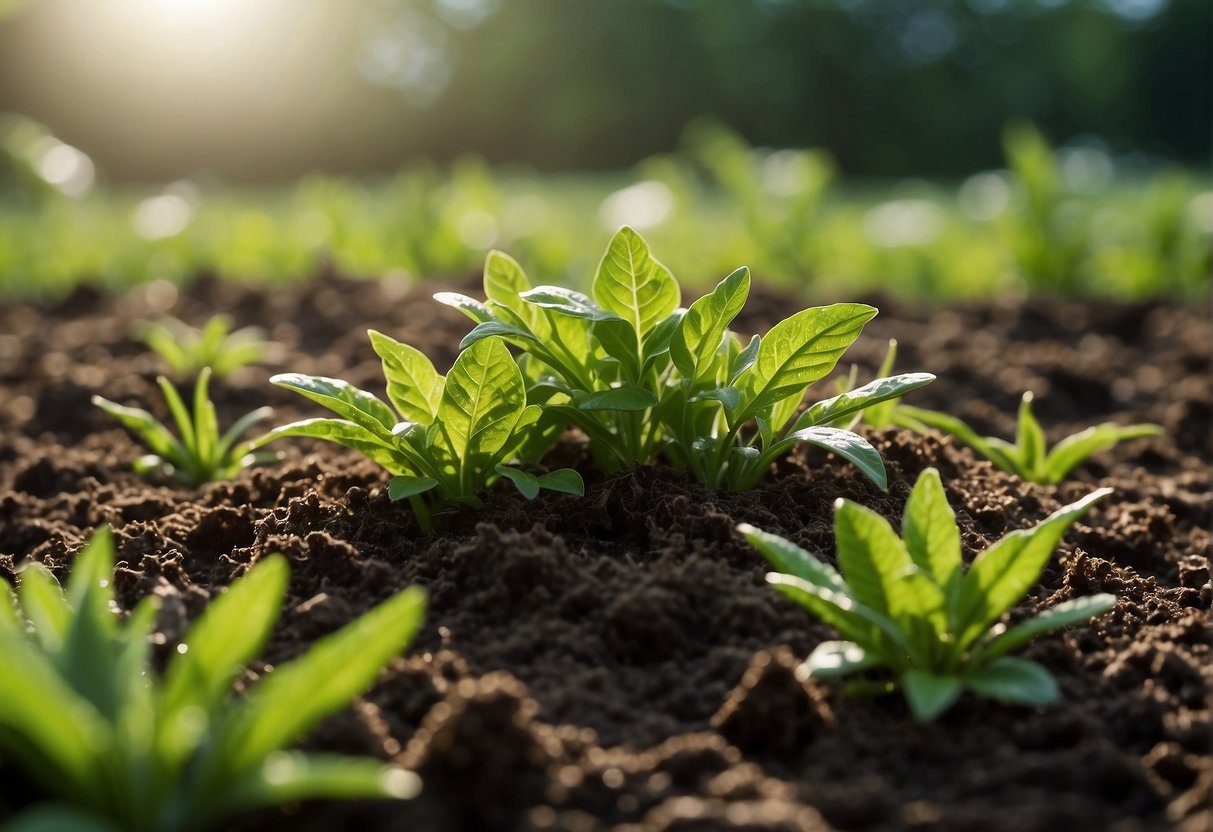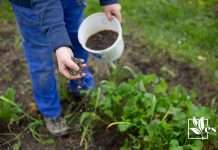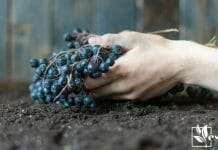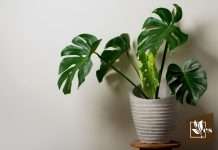In my gardening experience, I’ve found that while Epsom salt is often touted as a universal remedy for many gardening woes, it’s crucial to approach its use with caution. The notion that plants uniformly benefit from Epsom salt is a myth that can lead to unintended consequences for certain types of plants. Epsom salt, or magnesium sulfate, provides plants with magnesium, which is essential for seed germination, chlorophyll production, and improving flower blooming and fruiting. However, not all plants require the extra magnesium provided by Epsom salt, and for some, it could disrupt the balance of nutrients in the soil and potentially harm the plants.

From my observations, specific plants are known to react negatively to Epsom salt. For example, plants that thrive in low-magnesium soils, such as some varieties of beans and leafy greens, can experience adverse effects if Epsom salt is added indiscriminately. High concentrations of magnesium can compete with other vital nutrients, like calcium and potassium, leading to deficiencies that may hamper plant growth. Moreover, particular plants that prefer acidic soil, like blueberries and azaleas, may suffer from the neutralizing effect of Epsom salt, which can significantly alter the pH level of their growing medium.
JUMP TO TOPIC
Epsom Salt and Plant Health
Epsom salt, known chemically as magnesium sulfate, is a popular soil amendment in gardening. It’s heralded for its rich magnesium and sulfur content—essential micronutrients for plant growth. In this section, I’ll guide you on what Epsom salt does for plants and how to leverage its benefits in your garden.
Understanding Magnesium Sulfate
Magnesium and sulfur, the two primary components of Epsom salt, are essential for plants. Magnesium is pivotal in the process of photosynthesis, as it forms the core of the chlorophyll molecule in plant leaves. This means that it plays a significant role in the green coloration and the energy production of plants. Sulfur, on the other hand, contributes to the creation of essential enzymes and amino acids, which are crucial for overall plant health.
The Role of Epsom Salt in Nutrient Uptake
As a fertilizer, Epsom salt is used to address magnesium or sulfur deficiencies in the soil. A lack of magnesium can lead to stunted growth and leaf curling in plants. By supplementing with Epsom salt, I’ve observed improved nutrient uptake, greener leaves, and better blooming in my garden 🌸.
Application Techniques for Gardens
It’s important to apply Epsom salt correctly to avoid overuse or damage to plants. Here are a few techniques I use in my garden:
- Soil Incorporation: I mix about one cup of Epsom salt per 100 square feet into the soil before planting.
- During Planting: I often add a tablespoon of Epsom salt directly into the planting hole for individual plants.
- Foliar Spray: For a more immediate effect, particularly on mature plants, I dissolve two tablespoons of Epsom salt per gallon of water and apply it as a foliar spray, ensuring a quick supply of these vital nutrients.
When using Epsom salt, it’s essential to be aware that not all plants require or benefit from additional magnesium and sulfur. For example, plants susceptible to excess magnesium, such as sage, may suffer if Epsom salt is applied unnecessarily. Therefore, I always recommend a soil test before deciding to use Epsom salt in your garden.
Optimizing Soil Health and Fertility
As a gardener, I’ve found that focusing on soil health is the cornerstone of a thriving garden. The key lies in understanding and adjusting soil components to promote vigorous plant growth.
Conducting Soil Tests
I start by conducting a soil test to get a baseline of my soil’s current state. This involves sending a soil sample to a lab where experts analyze the pH, nutrient levels, and potential contaminants. Soil test kits are also available for a more immediate, if less comprehensive, assessment. 🌱
Balancing pH and Nutrient Levels
With the results in hand, I address any pH imbalances. Most plants prefer a pH between 6.0 to 7.0. If I find the soil too acidic, I’ll add lime; if it’s too alkaline, sulfur may be necessary. Balancing pH is critical, as it affects nutrient availability. Then, I adjust nutrient levels accordingly, focusing on nitrogen, phosphorus, and potassium—the primary nutrients plants need. I may use natural soil amendments such as bone meal for phosphorus or greensand for potassium.
Organic Matter and Composting
Incorporating organic matter is an excellent way for me to improve soil structure, water retention, and fertility. Compost is my go-to, as it’s rich in nutrients and supports beneficial microorganisms. Adding other organic materials, like manure or worm castings, further enriches the soil. I make sure to mix these amendments well into the soil to promote uniformity and prevent any damage to plant roots. 🌸
Through these actions, I effectively create a nurturing environment that allows plants to flourish and often find that healthy soil reduces the need for synthetic fertilizers and pesticides, leading to a more sustainable garden ecosystem.
Growth and Care for Specific Plants
In my experience, understanding specific nutrient requirements and common issues can vastly improve plant health. Here’s how I address concerns for roses, tomatoes, peppers, beans, and lettuce.
Roses and Blossom-End Rot
Roses require careful attention to magnesium and calcium levels in the soil to prevent blossom-end rot and ensure strong growth. I’ve found that incorporating Epsom salts into the soil can be beneficial, as it supplies magnesium, which is crucial for chlorophyll production and overall vigor.
Apply Epsom salts at a rate of one tablespoon per foot of plant height, roughly once a month to prevent deficiency symptoms.
Tomatoes, Peppers, and Leaf Scorch
Tomatoes and peppers thrive when nitrogen, calcium, and iron are available in the right amounts. A lack of these elements can lead to leaf scorch, where edges of the leaves brown and the plant’s growth is stunted. I make sure to use a balanced fertilizer, preferably with a 5-10-10 NPK ratio, to combat these issues.
💥 Key Nutrients
A nitrogen deficiency shows as yellowing leaves, while a calcium deficiency often results in blossom-end rot, especially in tomatoes.
Beans and Lettuce: Addressing Deficiencies
For plants like beans and lettuce, which are particularly susceptible to magnesium and iron deficiencies, I find that a regular feeding schedule is key. Beans also need adequate nitrogen for good leaf development and pod formation.
Avoid high nitrogen fertilizers for lettuce to prevent soft growth; opt for a balanced formula. For beans, use a low-nitrogen fertilizer once pods begin to set.
For both beans and lettuce, I tend to use a fertilizer with trace elements included, or I amend the soil with compost that’s rich in varied organic matter which helps prevent nutritional deficiencies.
Debunking Gardening Myths
In the realm of gardening, it’s vital to distinguish between fact and fiction, especially when it comes to the use of common household items purported to benefit our plants.
The Myth of Universal Epsom Salt Benefits
| Plant Type | Potential Reaction to Epsom Salts | Sensitivity |
|---|---|---|
| Pepper Plants | No scientific evidence of improved yield | Low |
| Azaleas | Risk of magnesium toxicity | High |
| Sage | Potential for inhibited growth | High |












